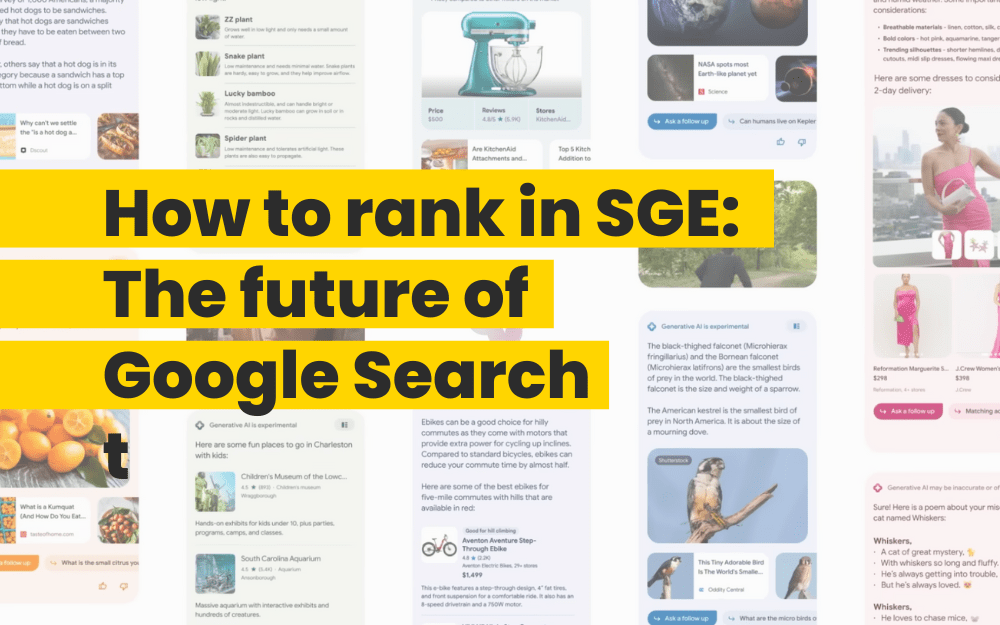As a Marketing Manager, it can be difficult to manage the expectations of your CMO. Their focus tends to be on performance and ROI and unlike sales, marketing isn’t always as easy to predict.
It doesn’t matter whether you’re looking to increase your conversion rate or grow your traffic, forecasting is crucial for digital marketing success. But how do you do it and what should you focus on? Here you’ll find the need-to-know about forecasting ad performance that will satisfy and impress your CMO.
How to forecast ad budgets?
When it comes to forecasting, marketers who are unable to plan and communicate their budget plans are at a huge disadvantage.
It’s the responsibility of a Marketing Manager to convey the importance of the budgets to the CMO or risk their budget being determined for them by people higher up in the business who likely don’t have a wider understanding of marketing. In fact, 57% of marketers who are solely in charge of their budget see a 10% increase in revenue from digital channels compared to just 18% of marketers with little to no control of their budget.
So, how do you effectively forecast ad budgets that get results?
Know which metrics to track
In an ideal world, we’d all be tracking every marketing metric out there. But in reality, no one has the time or money to be spread across so many areas. Plus, focusing on too many at once can be a hindrance, we’ve all heard the saying, ‘Jack of all trades, master of none’.
When planning out the year or months ahead, make sure to pick the core metrics that will measure your success. These will likely be different from brand to brand, so, don’t worry too much about following headliners, like traffic, if it’s not relevant for your business at the time. Once you have homed in on the metrics that matter to you, you’re ready to create, plan and budget a killer paid media campaign.
Create success ranges rather than exact figures
CMOs love to know the numbers. They want to know whether an activity is worth the time and effort for the results.
When preparing your ad budgets, remember to create a range rather than a specific result. For example, instead of saying ‘we aim to increase impressions by 60%’, say you’ll increase impressions from between 50 and 70%. While this does offer you some wiggle room when it comes to achieving targets, it’s also a more realistic goal. There’s so much uncertainty with forecasting, for example you can’t predict trends that may affect search volume, conversion rates and CPCs – to name a few. All good reasons for setting a range of success to aim for to factor in these unknowns.
Make use of simulation tools
Instead of navigating these gaps and inaccuracies, there’s a new breed of forecasting simulation you can now rely on. BOSCO™ allows you to play around with different scenarios and platforms to test their outcomes without the risk to your budgets.
This can be done using predictive analytics and machine learning. Predictive analytics are produced by reflecting on past data to find trends, including the data’s current position to make predictions about the future.
Evaluation and allocation of ad budgets
It can be difficult to know how much and where you should be spending your marketing budget. With so many channels, it’s tempting to throw money at all of them and see what sticks. But knowing where to spend your money – and keeping your CMO happy – is one of the biggest challenges facing Marketing Managers. So, how do you know where to allocate your budget for the biggest ROI?
If you’re working with an external agency, strategies can easily become muddled. With so many different viewpoints, getting an agnostic view over all channels isn’t easy. By using one tool that collates all your data, you’ll be able to get a far better understanding of performance.
Communicating performance and ROI
Once you’ve got an understanding of where your budget should be allocated and implemented these changes, you can use performance results to gain an understanding of what drives ROI. Not only is this invaluable insight for future campaigns, but it also gives you measurable results to take to quarterly reviews at senior marketing meetings.
Reporting is an essential part of a Marketing Manager’s job and can come with its own limitations. Pulling together data from different channels and platforms is a time-consuming task that can take days to complete. That’s a few days every month you must spend on admin. To make your life easier, and to really impress your CMO, consider investing in a reporting tool that will collate your cross-channel data. Imagine saving hours of valuable time and having a personalised dashboard of your ad performance that’s easy to understand and present? What boss wouldn’t be impressed with that.
Benchmarking ad performance
Benchmarking against yourself as a business is a fantastic way of learning from your past campaigns to guide your future ones. But when it comes to your competitors, how do you know that you’re beating them when it comes to ad performance?
By benchmarking your performance against your competitors, you can see which areas you’re excelling at and which you may need to improve upon. It will also give you a good idea of which channels they are performing well on, and you can adjust your budgets if you notice any opportunities. If you’re looking to move into a new channel, this could be a great way of showing your CMO where your competitors are outperforming you and gaining conversions.
Breaking through in this space is a marketing-first. The BOSCO Index™, can benchmark your company against your competitors in terms of online presence. That includes organic and paid media as well as identifying which ad channels are the most successful in your industry. Marketing managers can use these scores to build more robust digital marketing strategies and get ahead of the competition.
If you have any questions for our team about how we can help you digitally transform your business or would like to know more about the BOSCO™ software, book a demo.




